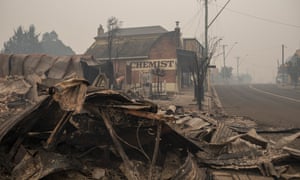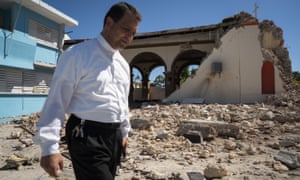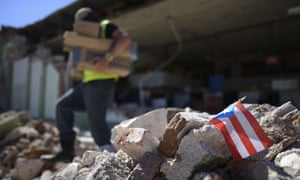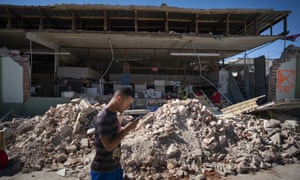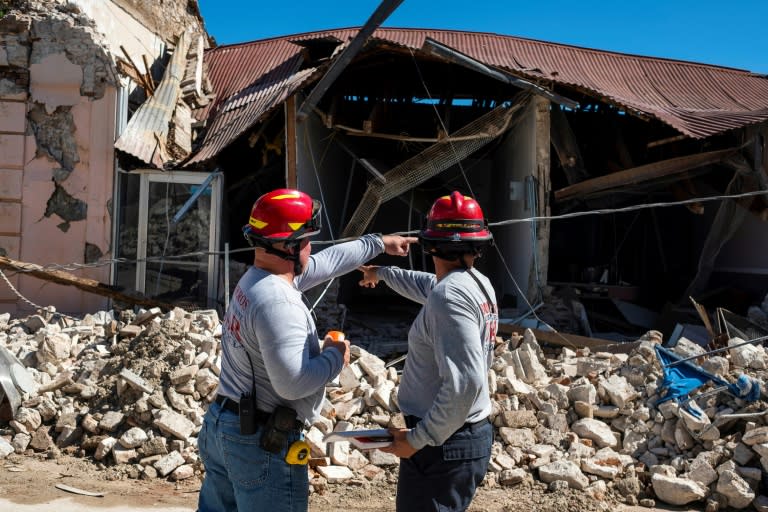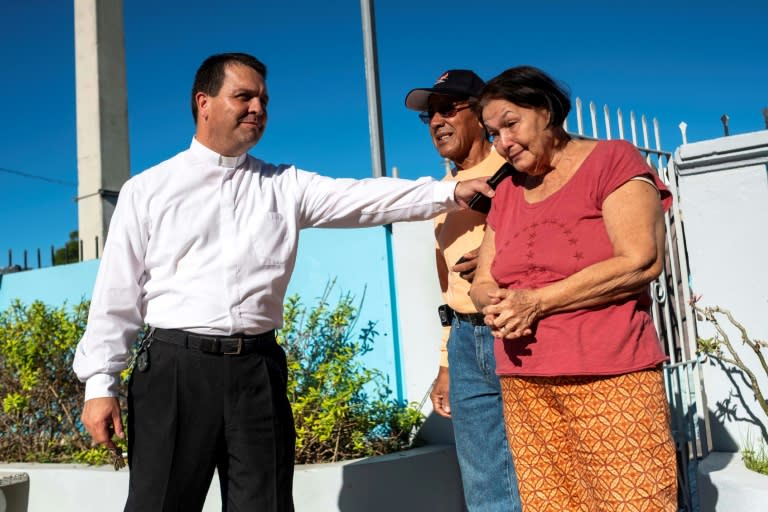No breakthrough in French pensions impasse
 AFP / Christophe SIMONA CGT union banner reading "On Strike" Tuesday at a blocked oil refinery in Martigues, southern France, as part of protests over a pension reform.
AFP / Christophe SIMONA CGT union banner reading "On Strike" Tuesday at a blocked oil refinery in Martigues, southern France, as part of protests over a pension reform.
Talks between the French government and unions aimed at ending a 34-day transport strike failed Tuesday to break the deadlock over a planned pensions overhaul, one of the most hotly contested reforms launched by President Emmanuel Macron.
Macron's push for sweeping changes to the pension system has unleashed the longest transport strike in France in decades, causing weeks of travel chaos in Paris particularly.
As the standoff expanded to oil refineries, raising fears of petrol shortages, Prime Minister Edouard Philippe said that both sides needed to "budge a little."
While insisting the reforms would not be withdrawn, he made conciliatory noises about the government's proposals to extend the minimum age for receiving a full pension to 64 from 62.
 AFP / Lionel BONAVENTUREPrime Minister Edouard Philippe addressed journalists after his meeting with union leaders in Paris on Thursday, the 34th day of a massive transport strike.
AFP / Lionel BONAVENTUREPrime Minister Edouard Philippe addressed journalists after his meeting with union leaders in Paris on Thursday, the 34th day of a massive transport strike.
The proposal, which aims to get the French to work longer, has prompted an outcry, including from the more moderate unions with which the government is hoping to do a deal.
"The pivot age (64) must be removed from the bill," said Laurent Berger, the leader of the moderate CFDT union, France's largest, giving the government an ultimatum to rescind the proposal by Friday.
Philippe said that if unions could come up with a better way of ensuring that the pension system remains solvent, "I will take it."
But the hardline CGT union, the biggest at state rail operator SNCF, continued to demand that the government scrap the reforms outright.
"The only overture we want to hear is, 'We're stopping everything'," CGT leader Philippe Martinez told France Inter radio.
On Tuesday, the strike hit oil refineries following calls by the CGT for a blockade of petrol shipments.
The government said five of the country's eight refineries were experiencing "temporary delivery difficulties" but the CGT insisted all eight were affected.
- Retailers hurting -
As the standoff continues, public support for the strike, which remained high throughout the first month, has begun to fall.
A Harris Interactive poll released Monday showed 60 percent backing the industrial action, down nine points since it started.
An Ifop poll gave it just 44 percent backing, down seven points from the previous survey on December 19-20.
The reform would eliminate 42 separate pension schemes that offer early retirement and other advantages, mainly to public-sector workers, in favour of a single system.
The CGT and FO unions have called for a new day of mass walkouts on Thursday, which could see schools shut and public transport even more impacted than usual.
Train operator SNCF says it has lost more than 600 million euros ($670 million) in ticket sales since the strike began on December 5.
The head of the Paris chamber of trades and crafts said retail sales in the capital were down by 30 to 40 percent.
- 'Gritting our teeth' -
As the weeks pass, the number of striking rail and metro workers has tapered off, partly due to lost pay.
"For now, we are gritting our teeth," Eric Challal, a striking customer service agent at Gare du Nord station in Paris, told AFP.
The strike is the longest continuous stoppage on French railways since the national rail service was created in the 1930s.
Macron made the pensions overhaul a key plank of his 2017 election campaign, saying a single, points-based system would be fairer, in particular for women and low earners.
The government has already made a series of concessions to the police, military, rail workers and Paris Opera employees, allowing them to continue to retire early or to keep their separate benefits for several years to come.
But most salaried workers born in 1975 or later would be impacted by the new system, in which people would earn points based on lifetime earnings.
Currently, most pensions are calculated on a worker's 25 best years of earnings -- public workers, however, get payouts based on their last six months.
French pension talks resume as govt seeks to end standoff
 AFP / Martin BUREAUFrench unions have called for blockades of refineries and fuel depots starting Tuesday, when talks resume on the government's pension overhaul
AFP / Martin BUREAUFrench unions have called for blockades of refineries and fuel depots starting Tuesday, when talks resume on the government's pension overhaul
French officials prepared to restart talks with unions Tuesday over a pension overhaul that has sparked the country's longest transport strikes in decades, which labour leaders say could force millions of people to retire later than they thought.
Public support appears to be shifting in the government's favour, with just 44 percent backing the strike in an Ifop poll released Sunday, down seven points from the previous survey on December 19-20.
The reform would eliminate 42 separate pension schemes that offer early retirement and other advantages, mainly to public-sector workers, in favour of a single system.
It would also create a "pivot age" of 64 to benefit from a full pension, penalising those who stop working at the official retirement age of 62 -- one of the lowest in Europe.
The government insists the measure is necessary for ensuring sufficient financing for the deficit-plagued system.
Yet officials have seized on an offer by France's largest union, the moderate CFDT, to hold separate talks on how to finance the plan later, in order to end the impasse over the pivot age.
 AFP / JEAN-PHILIPPE KSIAZEKLawyers demonstrated against the pension overhauls in Lyon, southeast France, on Monday
AFP / JEAN-PHILIPPE KSIAZEKLawyers demonstrated against the pension overhauls in Lyon, southeast France, on Monday
"That's a very good idea," Finance Minister Bruno Le Maire said Monday. "Never has a compromise seemed so close."
But the hard-line CGT and Force Ouvriere unions have vowed to derail the plan, urging a new day of mass walkouts against the reform on Thursday, which could see schools shut and public transport even more impacted than usual.
Train operator SNCF says it has lost more than 600 million euros ($670 million) in ticket sales since the strike began on December 5, and Paris commutes have been headaches for millions who rely on the RATP's metro, bus and suburban rail lines.
- 'We have to hold out' -
The CGT has stepped up its protest with a four-day blockade of refineries and fuel depots starting Tuesday, raising the prospect of petrol shortages.
Nurses, physiotherapists and lawyers, among dozens of professions with their own advantageous pension regimes, have also voted for strike actions this week.
But the number of striking rail and metro workers tapered off over the holidays, and the lost pay could make it hard to keep up the protest.
"It's going to be hard but we have to hold out at least until Friday," Mounir, an RATP employee, said Monday as drivers voted to prolong the strike.
Unions say they are relying on reserve funds and donations to limit the financial hit for strikers, in what has been France's longest continuous train strike since the national rail service was created in the 1930s.
President Emmanuel Macron made the pensions overhaul a key plank in his 2017 election campaign, saying a single points-based system would be fairer to women and low-earners in particular.
The government has already made a series of concessions to police and military personnel as well as SNCF workers, allowing them to continue retiring early or keep their separate benefits for several years yet.
But most salaried workers born in 1975 or later would be impacted by the new system, in which people would earn points based on their lifetime earnings, which would be converted into pension payouts upon retirement.
Currently, most pensions are calculated from a worker's 25 best years of earnings -- public workers, however, get payouts based on their last six months of pay, a more favourable base.
An Elabe poll released Monday found that most French (54 percent) support the points-based plan, though two-thirds oppose the pivot age of 64.
French government, unions resume pension talks amid transit strike
By Danielle Haynes

Access to a subway station is closed during a strike in Paris on Sept. 13. File Photo by Ian Langsdon/EPA-EFE
Jan. 7 (UPI) -- The French government and union representatives restarted negotiations Tuesday with the aim of ending the longest transportation strike in decades and coming to terms on reforms for the country's pension programs.
The talks began as the protests against President Emmanuel Macron's pension plan became the longest work strike since 1968. The transportation stoppage, which began Dec. 5, is the longest in the train service's nine-decade history.

Access to a subway station is closed during a strike in Paris on Sept. 13. File Photo by Ian Langsdon/EPA-EFE
Jan. 7 (UPI) -- The French government and union representatives restarted negotiations Tuesday with the aim of ending the longest transportation strike in decades and coming to terms on reforms for the country's pension programs.
The talks began as the protests against President Emmanuel Macron's pension plan became the longest work strike since 1968. The transportation stoppage, which began Dec. 5, is the longest in the train service's nine-decade history.
Protests and the off-and-on public transit strikes have been ongoing for months since Macron announced plans to combine France's various pension plans into one system.
His attempt to even out the retirement age across all systems to 64 has been a main source of contention for workers. Currently, the official retirement age to receive a full pension in France is 62.
Prime Minister Édouard Philippe said he believes the government and unions can come to an agreement. Still, transit workers haven't called off the strikes, which have led to more than $650 million in lost ticket sales.
Rail systems expect to be about 75 percent operational overall Wednesday. The Channel Tunnel service is fully operational, while the international Eurostar is about 90 percent operational.
Prime Minister Édouard Philippe said he believes the government and unions can come to an agreement. Still, transit workers haven't called off the strikes, which have led to more than $650 million in lost ticket sales.
Rail systems expect to be about 75 percent operational overall Wednesday. The Channel Tunnel service is fully operational, while the international Eurostar is about 90 percent operational.






 Bernie Sanders at a recent campaign event in Des Moines, Iowa. (Photo: Stephen Maturen/Getty Images)
Bernie Sanders at a recent campaign event in Des Moines, Iowa. (Photo: Stephen Maturen/Getty Images) Photo: Joe Raedle/Getty Images
Photo: Joe Raedle/Getty Images Supporters of Bernie Sanders at a rally in Los Angeles. (Photo: Robyn Beck/AFP via Getty Images)
Supporters of Bernie Sanders at a rally in Los Angeles. (Photo: Robyn Beck/AFP via Getty Images) Photo: Andrew Harnik/AP
Photo: Andrew Harnik/AP
